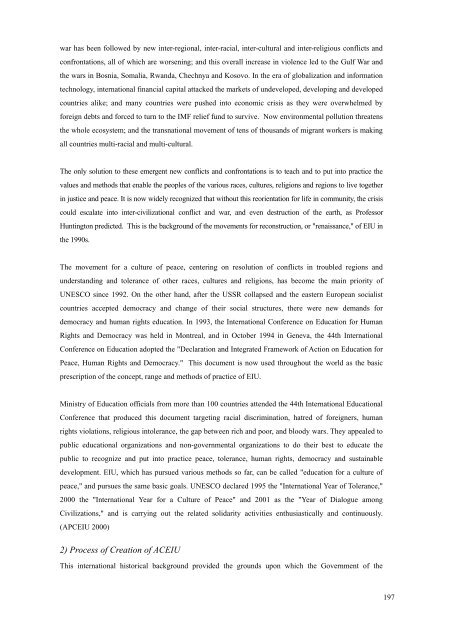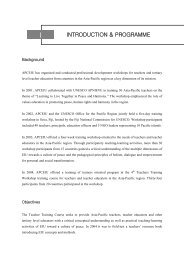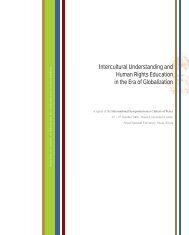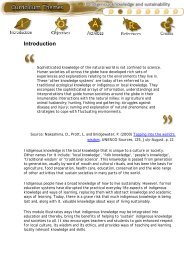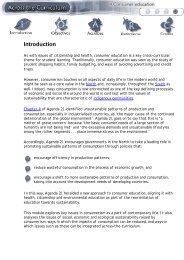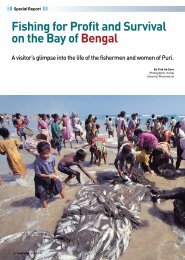REPORT OF UNESCO EXPERT MEETING ON - APCEIU
REPORT OF UNESCO EXPERT MEETING ON - APCEIU
REPORT OF UNESCO EXPERT MEETING ON - APCEIU
You also want an ePaper? Increase the reach of your titles
YUMPU automatically turns print PDFs into web optimized ePapers that Google loves.
war has been followed by new inter-regional, inter-racial, inter-cultural and inter-religious conflicts and<br />
confrontations, all of which are worsening; and this overall increase in violence led to the Gulf War and<br />
the wars in Bosnia, Somalia, Rwanda, Chechnya and Kosovo. In the era of globalization and information<br />
technology, international financial capital attacked the markets of undeveloped, developing and developed<br />
countries alike; and many countries were pushed into economic crisis as they were overwhelmed by<br />
foreign debts and forced to turn to the IMF relief fund to survive. Now environmental pollution threatens<br />
the whole ecosystem; and the transnational movement of tens of thousands of migrant workers is making<br />
all countries multi-racial and multi-cultural.<br />
The only solution to these emergent new conflicts and confrontations is to teach and to put into practice the<br />
values and methods that enable the peoples of the various races, cultures, religions and regions to live together<br />
in justice and peace. It is now widely recognized that without this reorientation for life in community, the crisis<br />
could escalate into inter-civilizational conflict and war, and even destruction of the earth, as Professor<br />
Huntington predicted. This is the background of the movements for reconstruction, or "renaissance," of EIU in<br />
the 1990s.<br />
The movement for a culture of peace, centering on resolution of conflicts in troubled regions and<br />
understanding and tolerance of other races, cultures and religions, has become the main priority of<br />
<strong>UNESCO</strong> since 1992. On the other hand, after the USSR collapsed and the eastern European socialist<br />
countries accepted democracy and change of their social structures, there were new demands for<br />
democracy and human rights education. In 1993, the International Conference on Education for Human<br />
Rights and Democracy was held in Montreal, and in October 1994 in Geneva, the 44th International<br />
Conference on Education adopted the "Declaration and Integrated Framework of Action on Education for<br />
Peace, Human Rights and Democracy." This document is now used throughout the world as the basic<br />
prescription of the concept, range and methods of practice of EIU.<br />
Ministry of Education officials from more than 100 countries attended the 44th International Educational<br />
Conference that produced this document targeting racial discrimination, hatred of foreigners, human<br />
rights violations, religious intolerance, the gap between rich and poor, and bloody wars. They appealed to<br />
public educational organizations and non-governmental organizations to do their best to educate the<br />
public to recognize and put into practice peace, tolerance, human rights, democracy and sustainable<br />
development. EIU, which has pursued various methods so far, can be called "education for a culture of<br />
peace," and pursues the same basic goals. <strong>UNESCO</strong> declared 1995 the "International Year of Tolerance,"<br />
2000 the "International Year for a Culture of Peace" and 2001 as the "Year of Dialogue among<br />
Civilizations," and is carrying out the related solidarity activities enthusiastically and continuously.<br />
(<strong>APCEIU</strong> 2000)<br />
2) Process of Creation of ACEIU<br />
This international historical background provided the grounds upon which the Government of the<br />
197


